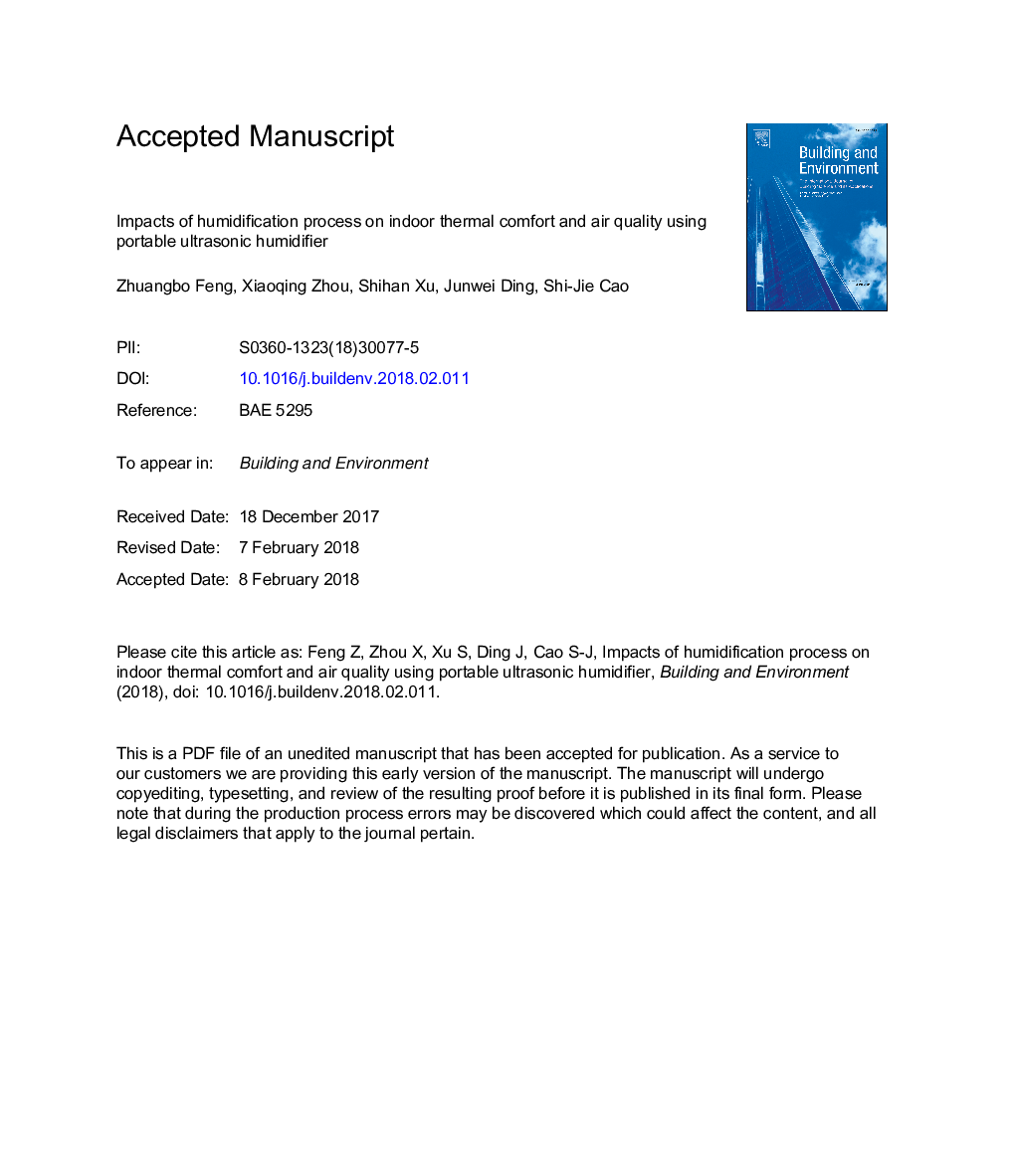| Article ID | Journal | Published Year | Pages | File Type |
|---|---|---|---|---|
| 6697845 | Building and Environment | 2018 | 23 Pages |
Abstract
Human exposed to low level of indoor humidity will have dryness (for skin, pharyngeal, eye etc.) or respiratory symptoms, which are closely related with indoor thermal comfort and air quality. To increase indoor humidity, portable humidification facilities (e.g., ultrasonic humidifiers) are widely applied in residential buildings due to their economy and convenience. Most of the available indoor humidity-related studies were associated with health issues induced by humidity and airborne pollutants generated by humidifier. However, the studies are rarely focusing on the effects of unsteady humidification (water vapor and droplet-induced from portable humidifier) on indoor thermal environment (i.e., air temperature, humidity, thermal comfort) and indoor air quality (e.g., TVOC, particles). Thus, this work aimed to investigate the impacts of humidification process on indoor environment by experiments in an isothermal chamber. The results show that portable ultrasonic humidifier increased humidity and decreased temperature simultaneously. The unsteady air temperature curve had “ladder-like” pattern. If RH increased from 34% to 60%, air temperature and PMV (Predicted Mean Vote) were decreased by 1.5â¯Â°C and 0.2 respectively. The obvious spatial stratification phenomenon was observed for both temperature and humidity field. We also found the obvious decrease of PM and TVOC concentrations during the entire humidifying process. Compared to traditional steam humidification system, indoor portable ultrasonic humidifier could save 70% of energy consumption and 18% of exergy loss. These qualitative characteristics of indoor humidification process would facilitate for indoor humidity control in the perspectives of human health and thermal comfort.
Related Topics
Physical Sciences and Engineering
Energy
Renewable Energy, Sustainability and the Environment
Authors
Zhuangbo Feng, Xiaoqing Zhou, Shihan Xu, Junwei Ding, Shi-Jie Cao,
